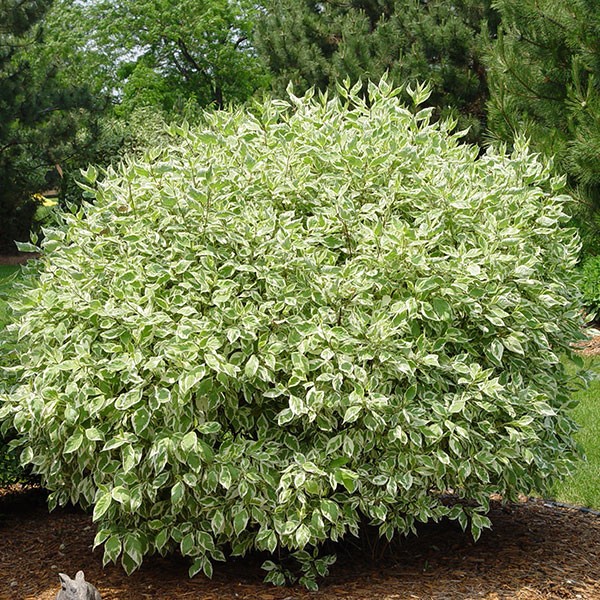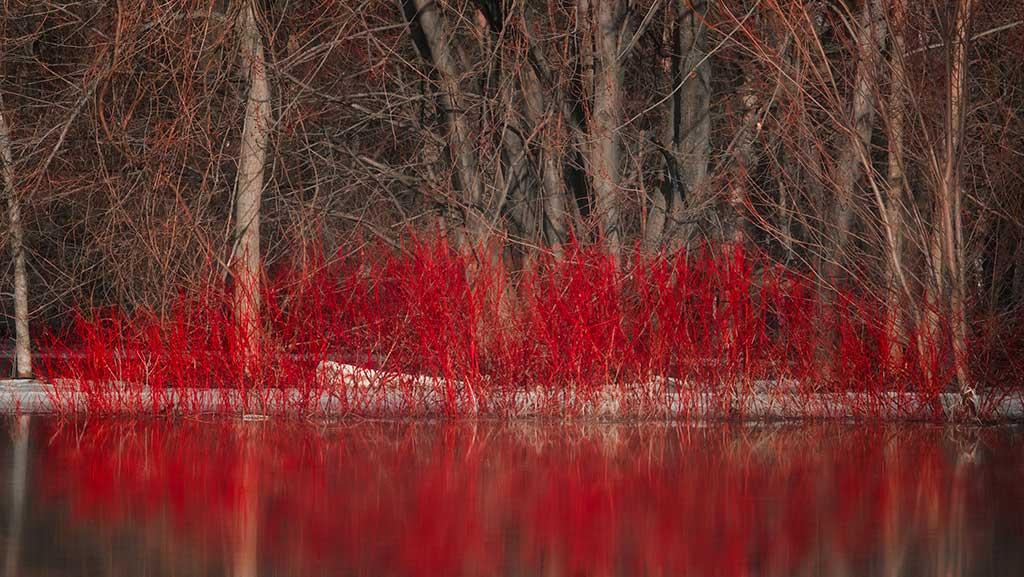Ivory Halo Dogwood: The Number Reasons To Grow This Stunning Shrub
The Ivory Halo Dogwood (Cornus alba 'Bailhalo') is a beautiful and versatile shrub that can add interest to any garden. It is known for its colorful stems, variegated foliage, and compact size. Here are 10 reasons why you should consider adding an Ivory Halo Dogwood to your landscape:
- Colorful stems. The Ivory Halo Dogwood is one of the most colorful dogwoods in the winter. Its stems turn a brilliant red, which provides a striking contrast to the snow and other plants in the garden.
- Variegated foliage. The Ivory Halo Dogwood's leaves are also quite attractive. They are a light green color with creamy white margins, which gives them a unique look.
- Compact size. The Ivory Halo Dogwood is a relatively small shrub, which makes it ideal for small gardens or as a border plant. It typically grows 4-6 feet tall and wide.
- Easy care. The Ivory Halo Dogwood is a very easy plant to care for. It is drought tolerant and can tolerate a wide range of soil conditions. It also does not require much pruning.
- Attracts wildlife. The Ivory Halo Dogwood's flowers and berries attract a variety of wildlife, including butterflies, birds, and bees. This makes it a great choice for gardens that are designed to be wildlife-friendly.
- Multi-season interest. The Ivory Halo Dogwood provides interest in the garden throughout the year. Its colorful stems are a sight to behold in the winter, and its variegated foliage adds beauty to the garden in the summer.
- Drought tolerant. The Ivory Halo Dogwood is drought tolerant, which makes it a great choice for gardens in hot, dry climates.
- Adaptable to a variety of soils. The Ivory Halo Dogwood is adaptable to a variety of soil conditions, including clay, sand, and loam.
- Notable resistance to pests and diseases. The Ivory Halo Dogwood is relatively resistant to pests and diseases, which makes it a low-maintenance plant.
- Award-winning plant. The Ivory Halo Dogwood has won numerous awards from gardening organizations, including the Award of Garden Merit from the Royal Horticultural Society (RHS).
If you are looking for a beautiful, easy-care, and versatile shrub to add to your landscape, the Ivory Halo Dogwood is a great option. It is sure to add interest to your garden throughout the year and attract a variety of wildlife.
The ivory halo dogwood is a beautiful and versatile shrub that can add interest to your landscape all year round. With its variegated leaves and bright red stems, it's sure to turn heads. If you're looking for a dogwood that's easy to care for and adaptable to a variety of conditions, the ivory halo dogwood is a great choice.
To learn more about the ivory halo dogwood, visit this website: https://www.monrovia.com/ivory-halo-dogwood.html. This website has a wealth of information about the plant, including its care requirements, planting instructions, and potential problems. You can also find photos and videos of the ivory halo dogwood in its various stages of growth.
FAQ of ivory halo dogwood
What are the most important things to know about Ivory Halo dogwood?
The most important things to know about Ivory Halo dogwood are that it is a deciduous shrub that grows to be 4-6 feet tall and wide, has white-variegated green foliage, and bright red winter stems. It is easy to grow and care for, and is tolerant of a variety of soil types and conditions. It is also deer-resistant.
Where should I plant Ivory Halo dogwood?
Ivory Halo dogwood can be planted in full sun or partial shade. It prefers moist, well-drained soil, but can tolerate some standing water. It is not tolerant of wet, poorly-drained soils.
How much water does Ivory Halo dogwood need?
Ivory Halo dogwood needs to be watered regularly, especially during the first two years after planting. Once established, it is more drought-tolerant. Water deeply once a week, or more often during hot, dry weather.
How do I fertilize Ivory Halo dogwood?
Ivory Halo dogwood does not need to be fertilized heavily. A light application of fertilizer in the spring will help it to thrive. Use a balanced fertilizer that is specifically formulated for shrubs.
How do I prune Ivory Halo dogwood?
Ivory Halo dogwood does not need to be pruned heavily. However, you can remove any dead, diseased, or damaged branches in the spring. You can also lightly trim the shrub to shape it as desired.
Is Ivory Halo dogwood deer-resistant?
Yes, Ivory Halo dogwood is deer-resistant. This makes it a good choice for planting in areas where deer are a problem.
What are some pests and diseases that Ivory Halo dogwood is susceptible to?
Ivory Halo dogwood is generally resistant to pests and diseases. However, it can be susceptible to powdery mildew, leaf spot, and anthracnose. If you notice any signs of pests or diseases, treat them immediately with an appropriate fungicide or pesticide.
How long does Ivory Halo dogwood live?
Ivory Halo dogwood can live for 20-30 years.
Image of ivory halo dogwood
- Image 1: A close-up of the leaves of an ivory halo dogwood tree. The leaves are green with a white edge, giving them a "halo" effect.
- Image 2: A full-grown ivory halo dogwood tree in bloom. The flowers are creamy white and arranged in flat-topped clusters.

- Image 3: A group of ivory halo dogwood trees in a garden. The trees are of different sizes and have different shades of green leaves.

- Image 4: A close-up of the flowers of an ivory halo dogwood tree. The flowers are made up of many small petals.

- Image 5: A bird sitting on a branch of an ivory halo dogwood tree. The bird is black with a white belly.

- Image 6: A view of an ivory halo dogwood tree from below. The tree has a spreading canopy and the leaves are a light shade of green.

- Image 7: A close-up of the bark of an ivory halo dogwood tree. The bark is smooth and gray.
- Image 8: A young ivory halo dogwood tree in a pot. The tree is about 2 feet tall and has several branches.

- Image 9: A group of ivory halo dogwood trees in a forest. The trees are in different stages of growth and have different shades of green leaves.

- Image 10: A fall view of an ivory halo dogwood tree. The leaves have turned a bright yellow color.

Post a Comment for "Ivory Halo Dogwood: The Number Reasons To Grow This Stunning Shrub"